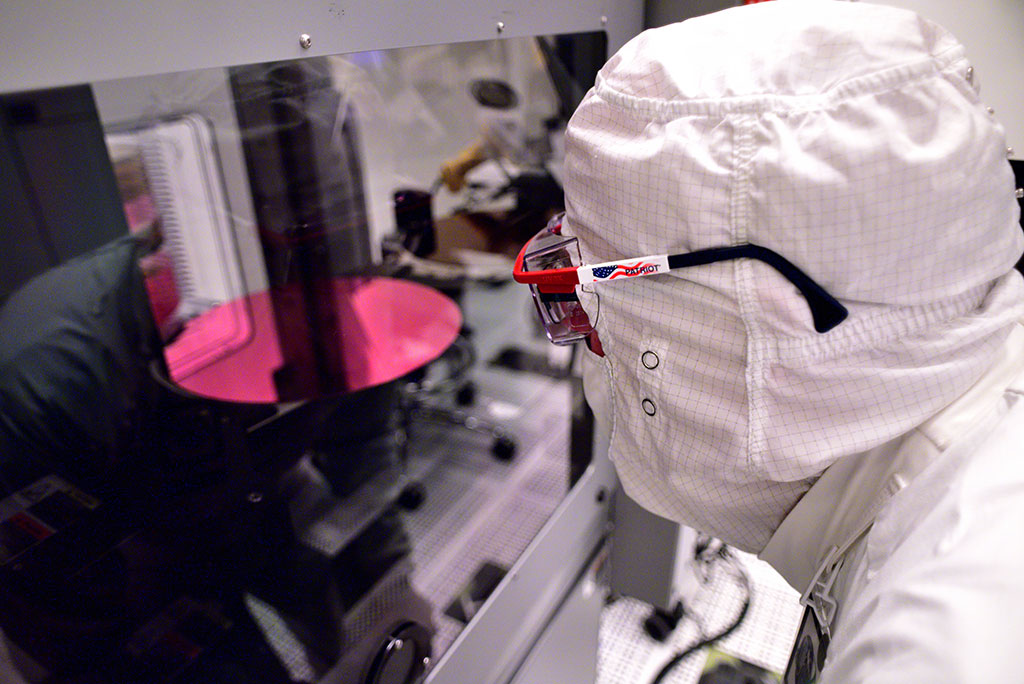Intel is 'pleased' with its progress on 7nm, believes it will spark Moore's Law again
Intel has separate teams working on 10nm and 7nm manufacturing technologies.

Intel is "very pleased" with the progress it is making on its 7-nanometer manufacturing technology, which might come as a surprise given that it's still not shipping 10-nanometer 'Cannon Lake' processors in volume, and won't until the end of next year. As it turns out, Intel has a separate team working on 7nm.
Dr. Murthy Renduchintala, chief engineering officer at Intel and head of the company's technology, systems architecture, and client group, made some interesting comments about 10nm and 7nm at Nasdaq's 39th Investor Conference.
"7 nanometers for us is a separate team and a largely separate effort. And we are quite pleased with our progress on 7, in fact very pleased with our progress on 7, and I think that we have taken a lot of lessons out of the 10-nanometer experience as we defined that and defined a different optimization point between transistor density, power and performance, and schedule predictability," Dr. Renduchintala said.
According to Dr. Renduchintala, the root causes of the challenges Intel faced with 10nm "goes back to the early definitions of 10 nanometers in 2014." He didn't go into tremendous detail about those challenges, though as Anandtech notes, Intel relied on deep ultraviolet lithography (DUVL) with lasers operating on a 193nm wavelength. The issue for Intel had to do with multi-patterning, a technique that overcomes lithographic limitations in the chip manufacturing process.
"14[nm] and 10[nm] were really about double-patterning and quad-patterning in the absence of EUV," Dr. Renduchintala said.
Intel's 7nm manufacturing technology uses extreme ultraviolet lithography (EUVL) with a much smaller, more precise laser wavelength of 13.5nm for some of the layers. This means less potentially problematic multi-patterning is needed.
"As you look at 7-nanometer, for us this is really now a point in time where we will get EUV back into the manufacturing matrix, and therefore, I think, that will give us a degree of back to the traditional Moore’s Law cadence that we were really talking about," Dr. Renduchintala added.
The biggest gaming news, reviews and hardware deals
Keep up to date with the most important stories and the best deals, as picked by the PC Gamer team.
Behind all the technical jargon, Intel's message seems to be that its problems with 10nm are a temporary blip on its roadmap—the company hit a speed bump, in other words, and not a dead end. But Intel has not publicly committed to a roadmap that lists 7nm products.
It will be interesting to see when Intel releases 7nm processors, and specifically if it will delay its 7nm roll out to make its 10nm plans look like they weren't a failure. The caveat there is if Intel's 10nm Cannon Lake chips can end up being competitive with AMD's 7nm Ryzen processors.
Intel's 14nm process (now 14nm++) is generally competitive with 10nm from Samsung and TSMC, and the numerics are often more marketing than true indications of how 'good' a process node is. If Intel can get volume 10nm going next year and stay in the lead, 7nm might roll out in 2021-2022. If not, Cannon Lake and 10nm may be as short-lived as the 14nm Broadwell parts.
Paul has been playing PC games and raking his knuckles on computer hardware since the Commodore 64. He does not have any tattoos, but thinks it would be cool to get one that reads LOAD"*",8,1. In his off time, he rides motorcycles and wrestles alligators (only one of those is true).


